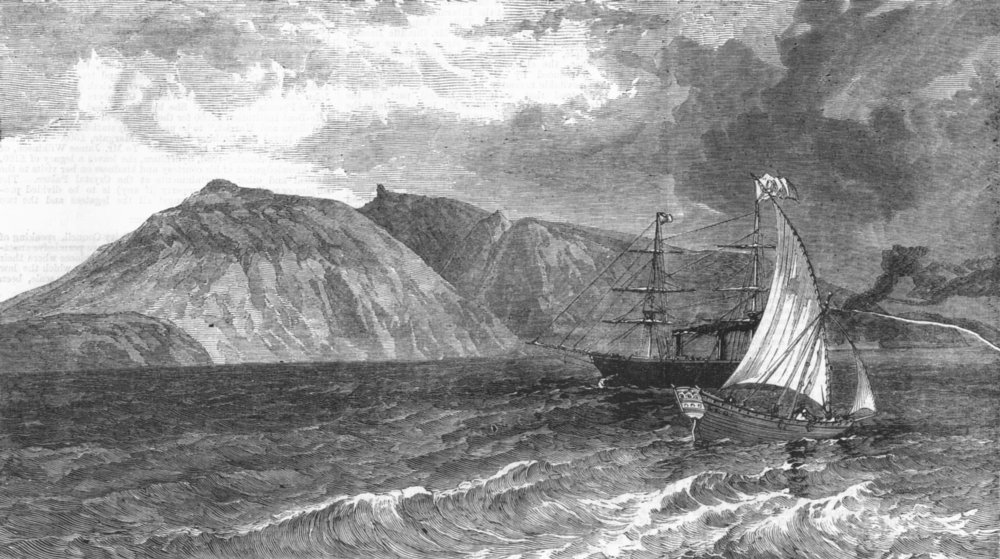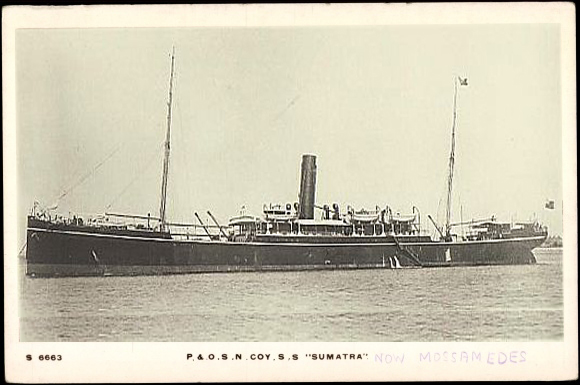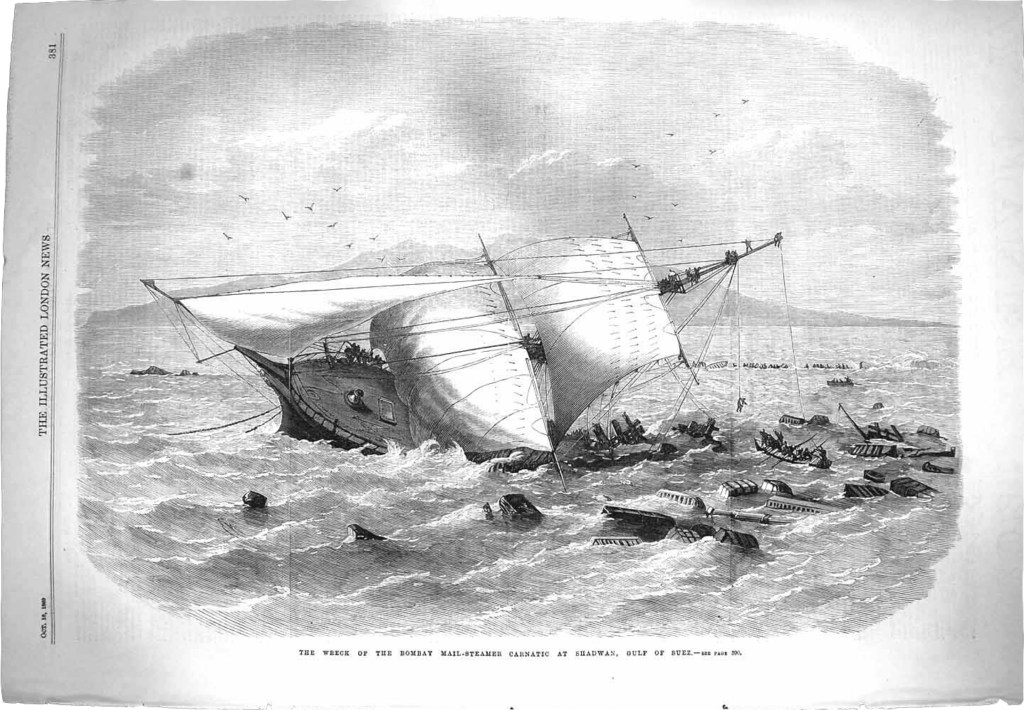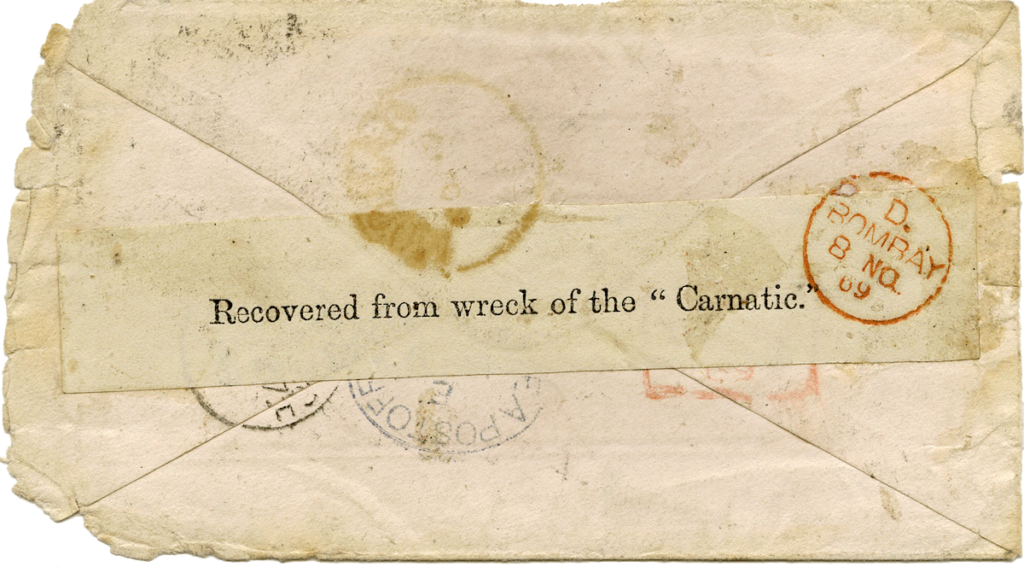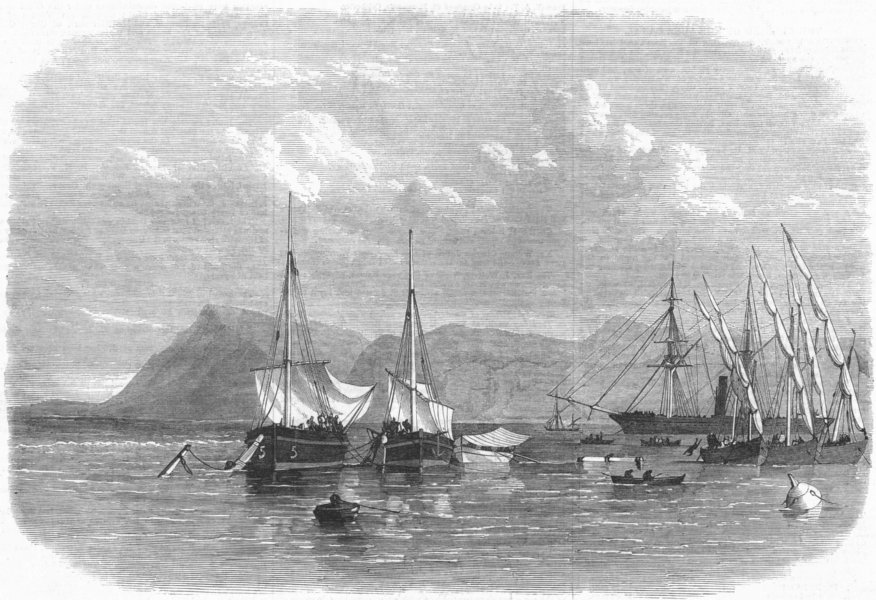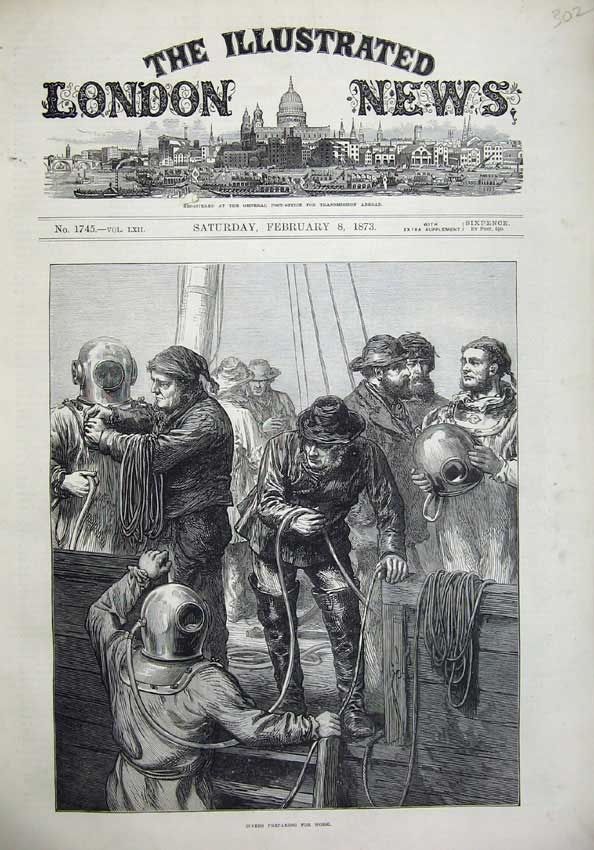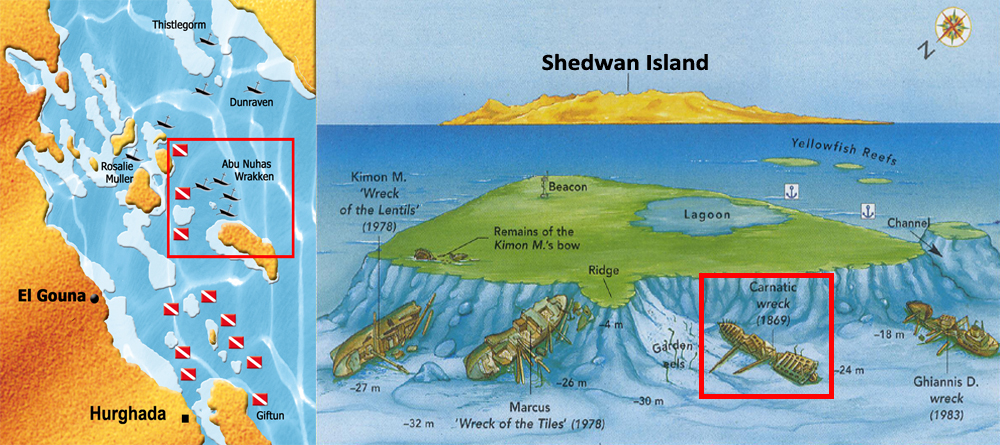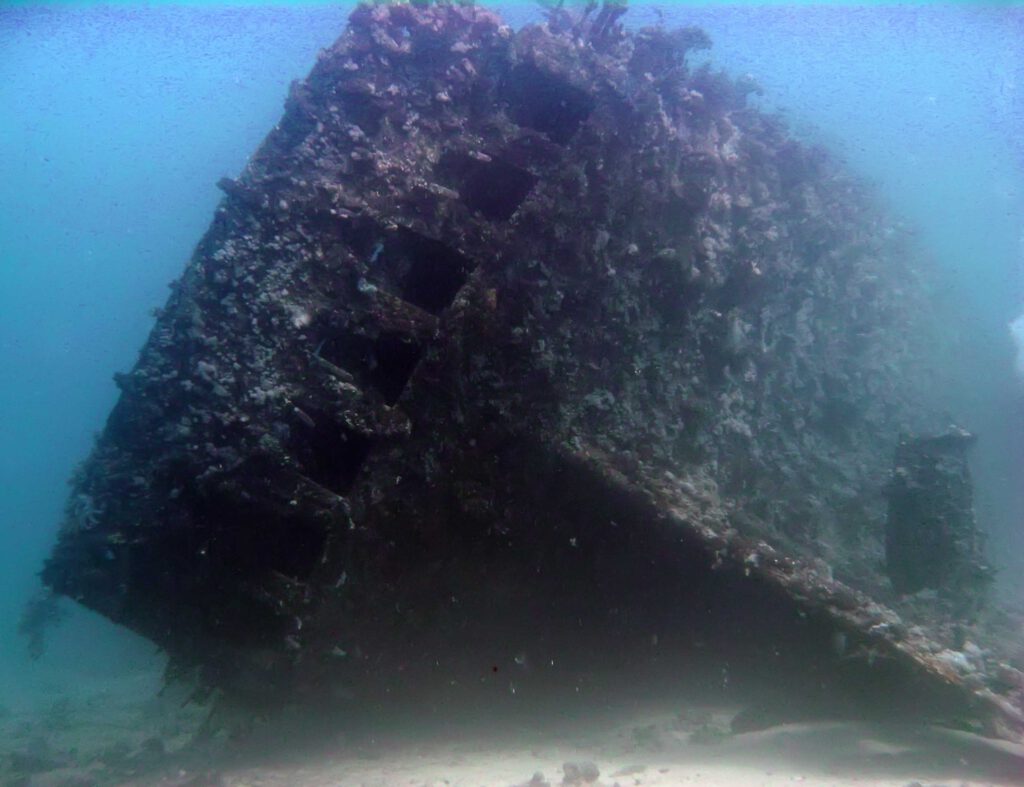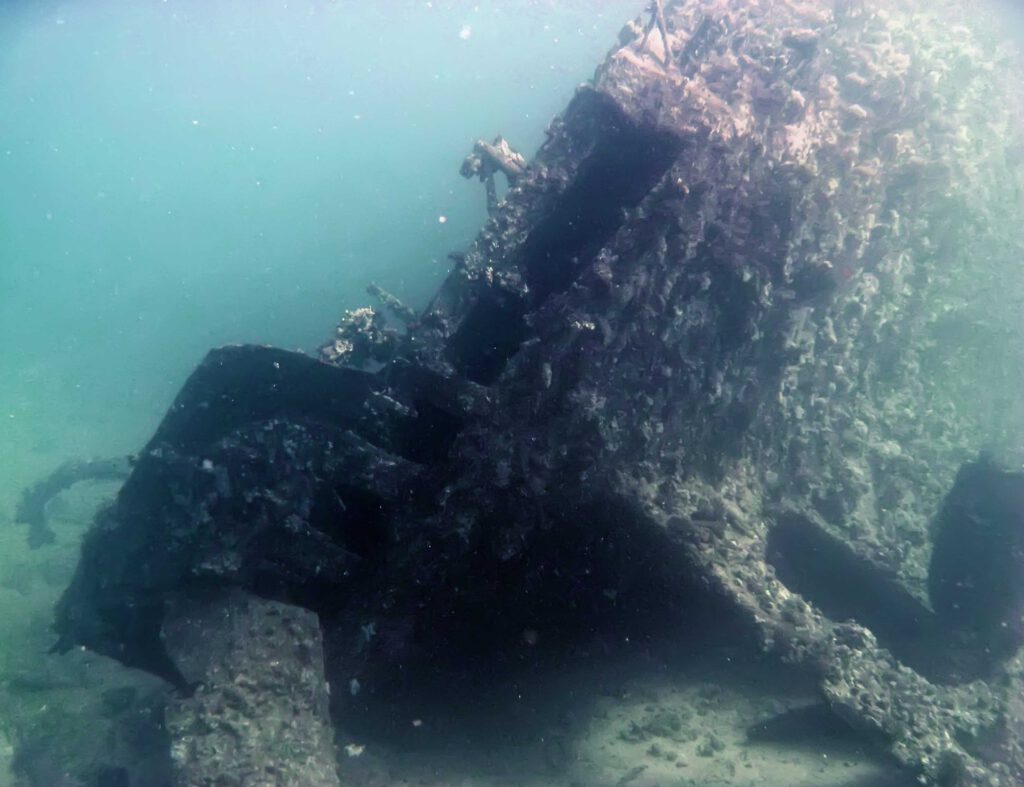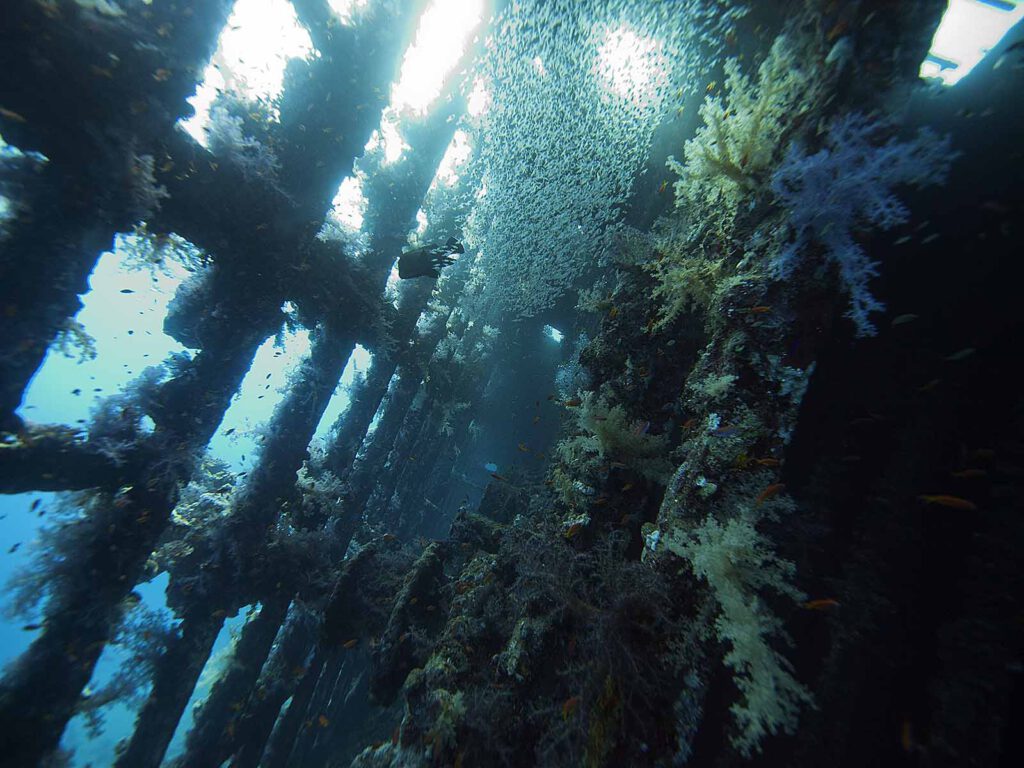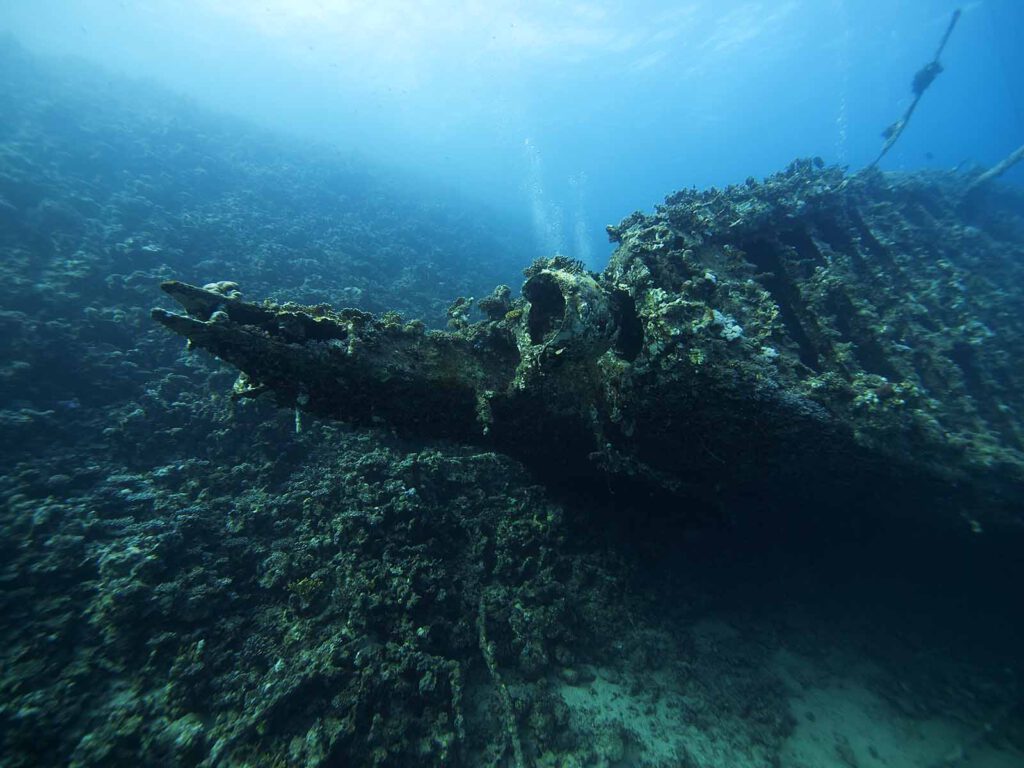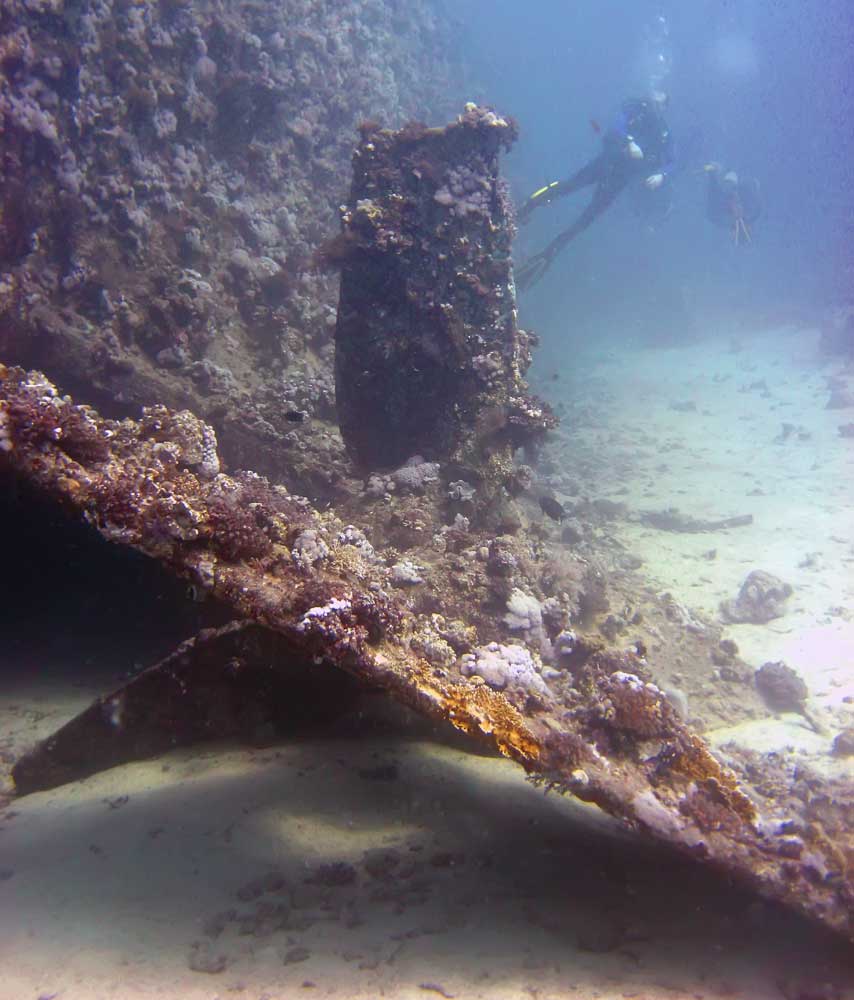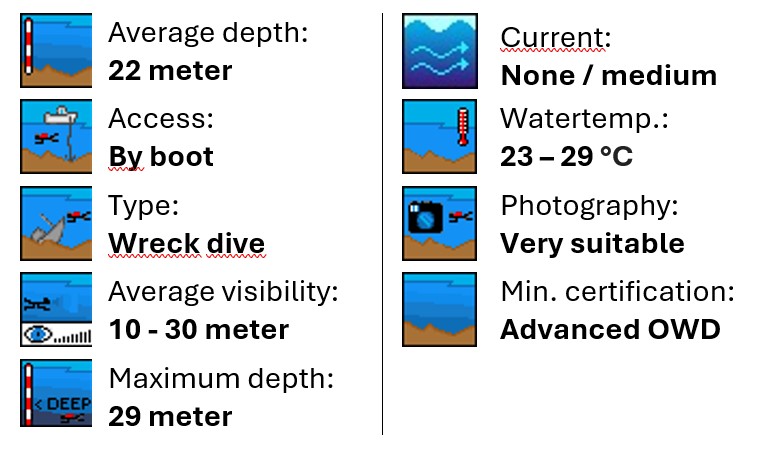The Carnatic (Abu Nuhas - Egypt)
The Carnatic, once a beautiful 90m long British P & O steamer (bound for Bombay) that struck the reef near Abu Nuhas in 1869 and sank the next day when the weather turned.
She was a passenger and mail ship, but is also known as the ‘wine’ wreck because of the many bottles of wine found in her cargo.

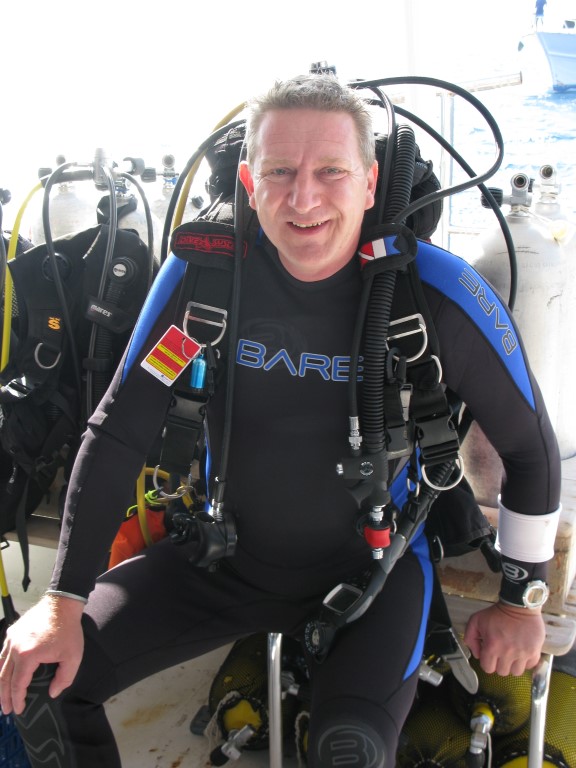
NOTE: At this time the PDF of the published article is only available in Dutch.
Sorry for the inconvenience.
Click to view the original article as PDF (Dutch)
The Carnatic (Abu Nuhas - Egypt)
This time the story of the oldest wreck I have ever dived on: “The Carnatic”
The Carnatic, once a beautiful 90m long British P & O steamer (bound for Bombay) that struck the reef near Abu Nuhas in 1869 and sank the next day when the weather turned. She was a passenger and mail ship, but is also known as the ‘wine’ wreck because of the many bottles of wine found in her cargo.
NOTE: We make use of “Sketchfab” click HERE to view the navigation controls
Click on the 3D model below to move it around
All credits to the above Photogrammetry model goes out to Holger Buss
The story & the dive
The data
- Year of construction: 1862
- Length: 89.8 meters / Width: 11.6 meters
- Weight: 1776 tons /
- Draft: 7.8 meters
- Power: 2442 HP, 4 cylinders
- Type: Sail / steamboat
- Date of sinking: 12 – 14 September 1869
- Minimum depth of wreck: 12 meters (Starboard side)
- Maximum depth to seabed: approx. 27 meters
- Current location: 27° 34’ 53″ N, 33° 55’ 32″ E.
(North side of the Sha’ab Abu Nuhas Reef, Egypt)
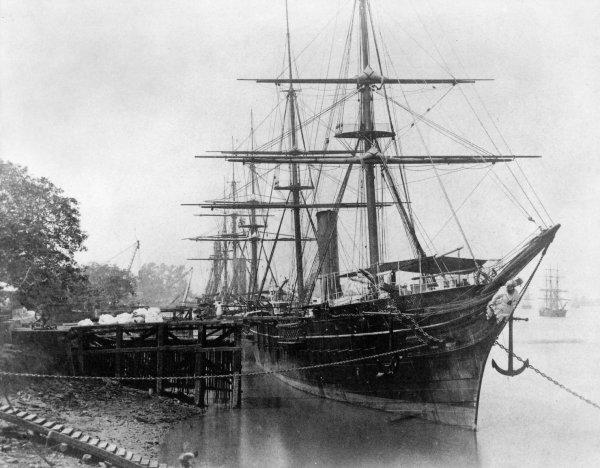
The Carnatic
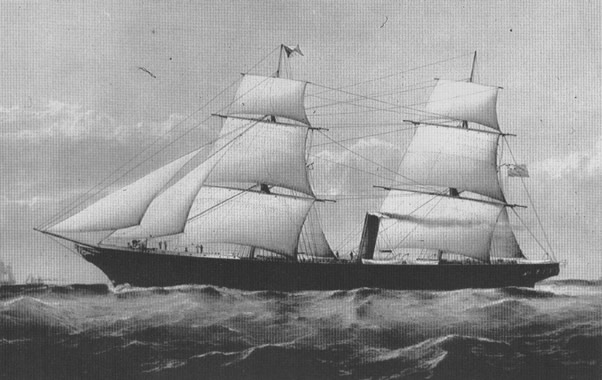
The story
After launching the ship sailed to Calcutta on 27th June 1863 where it was used for voyages between Suez, Bombay and China. It was a passenger and mail ship, the mail on this voyage was intended for the British troops in India.
But it also carried bales of cotton, copper ingots, soda water, 40,000 sterling in gold coins and a cargo of the finest wine.
Because of the latter this ship is also known as the ‘wine wreck’. Over time many bottles of wine have been found in and around the wreck.
She was propelled by a 4 cylinder steam engine of 2,442 hp, which was also built in London by Humphrys and Tennant, which gave the ship a speed of 12 knots.
The sails were used in case of engine damage and in case there was no coal for sale in the ports the ship visited. A hybrid from the 19th century, let’s say….
The cargo and passengers she had on board were brought by the Venetian from Liverpool to Port Said and from there transported by camel over a distance of 200 km to Suez, where they were loaded on board the Carnatic.
This had to be so roundabout at that time, because the Suez Canal had not yet been opened.
Nevertheless, this route was attractive because it avoided the long and dangerous journey around ‘the Cape of Good Hope’.
The opening of the Suez Canal was not until the end of September in 1869.
So 14 days after the Carnatic had left Suez…..
At 10 o’clock on the morning of 12th September 1869, the Carnatic, under the command of Captain P. B. Jones, left Suez harbour on a voyage to Bombay with a very valuable cargo, on what was to be his last voyage.
He had charge of 34 passengers, 176 crew and a cargo consisting of bales of cotton, copper bars, mail and £40,000 worth of gold destined for the Indian Mint (Government).
Captain P. B. Jones himself navigated the ship through the treacherous Gulf of Suez, not trusting his junior officers in navigation, and remained on the bridge. He tried to overcome his lack of sleep by drinking large quantities of coffee. At a speed of 11 knots, the Ashrafi lighthouse was sighted at 11:40 pm.
By this time the second officer came on the bridge just before midnight to relieve the captain. On this clear night Shadwan Island came into sight at 1 o’clock directly ahead of the Carnatic. The helmsman altered course to S. 46° and gradually to S. 51°. It was a clear night and there was a light wind, as was usual for these waters. But the important thing was that the mainland and the islands through which the Carnatic had to sail were both visible.
However, 18 minutes later breaking waves were observed just off the starboard bow; a reef!
The rudder was thrown hard to starboard and the engines were put in full reverse, but to no avail…..
A few minutes after midnight the ship collided with the Abu Nuhas reef where it then became firmly stuck. According to the captain P.B. Jones no reason to panic, the ship had a few leaks but the pump system was up to the job.
He ordered everyone to stay on board and wait for the ship `SS Sumatra’ to come to offer assistance. However, the Sumatra kept us waiting…..
The next morning the captain reviewed the situation, the pumps were working and he gave the order to throw bales of cotton overboard which would lighten the ship. He hoped that this would free the ship from the reef during high tide. There was no panic on board, although some passengers asked for permission to go to Shadwan Island. Jones did not give permission.
He was aware that moving 210 people to a remote island in small lifeboats was very dangerous.
Since his ship was in reasonable condition, and the Sumatra was already underway, he assumed that they would be rescued later that day.
People were on the lookout for the Sumatra all day, unfortunately without result.
Towards evening the passengers asked again if they could go to Shadwan Island with the lifeboats, Jones again refused permission. Jones apparently underestimated the force that the coral reef exerted on the ship and decided that everyone would spend another night on the ship. Most accepted Jones’ decision, and a few even changed clothes for dinner. The waiters served drinks and a delicious dinner.
Not knowing that for some passengers this would be their last…..
During this night of 13 to 14 September the leaks became bigger which unfortunately went unnoticed. At 2 o’clock in the morning the water reached the boilers and then the electricity failed. More and more passengers wanted to leave the ship, but Jones kept refusing. The ship filled up with water at a rapid pace and eventually he too saw that this situation was hopeless and gave the order to prepare the lifeboats.
It was not until 11 o’clock in the morning that he allowed the evacuation to start. Unfortunately this decision came too late for many passengers.
In the tradition of ‘women and children first’ the 3 ladies and 1 child had only just taken their places in the lifeboat when the ship broke up without any warning.
34 hours after the collision the ship broke up and the stern disappeared into the Red Sea with 5 passengers and 26 crew. The back of the ship quickly disappeared under water while the front listed and slid off the reef throwing everyone into the water. Passengers and crew fought for their lives through all the wreckage.
As the lifeboats drifted away there were many instances of courage and brute strength among the crew to save themselves and each other. The crew gathered on the reef and managed to capture 7 lifeboats.
After a final search for survivors, everyone boarded the lifeboats. The crossing to Shadwan Island was just over 5 km from the nearest point of the Sha’b Abu Nuhas Reef.
To reduce rowing time, the men took turns towing the lifeboats to the nearest point of the reef, walking across the reef. It was after sunset that day when they finally reached Shadwan Island.
Fortunately, the bales of cotton had also washed up here and provided warmth during the night ahead.
Later that night, the Sumatra was spotted, which responded quickly to the only ‘signal flare’ that was fired, and all remaining passengers were rescued.
31 crew and passengers did not survive the disaster.
The news of the sinking had a shocking effect in Britain, and a salvage operation was immediately set in motion. The cargo, worth millions of pounds today, was salvaged by Lloyd’s almost immediately. Captain Henry Grant was made the man in charge of the salvage. Grant had been told that the ship was in 70 metres of water, and decided to go to the scene first to assess the situation.
He arrived on the 29th of June and had to immediately chase away several Arab boats. Grant was surprised to find the ship in relatively shallow water right at the bottom of the reef. The ship was even visible from the surface.

Working from the salvage vessel ‘Tor’ Grant had only 1 diver at his disposal, Stephen Saffrey from Whitstable. The diving was done using a ‘new’ diving system with helmet and air pump.
This was the first time that a salvage operation would be carried out using this revolutionary surface/dive system.
Due to bad weather conditions, the first dive could not take place until October 15th. The first search began in the mail room where the first body was recovered.
The mail was brought to the surface and the jewelry was also recovered from the safe.
It was not until the 24th that Saffrey managed to make her way to the adjacent ‘post office’ where another 16 mail bags were found.
Working from the salvage vessel ‘Tor’ Grant had only 1 diver at his disposal, Stephen Saffrey from Whitstable. The diving was done using a ‘new’ diving system with helmet and air pump.
This was the first time that a salvage operation would be carried out using this revolutionary surface/dive system.
Due to bad weather conditions, the first dive could not take place until October 15th. The first search began in the mail room where the first body was recovered.
The mail was brought to the surface and the jewelry was also recovered from the safe.
It was not until the 24th that Saffrey managed to make her way to the adjacent ‘post office’ where another 16 mail bags were found.
The first crate of precious metals was brought to the surface on the 26th.
The entire salvage operation was completed on November 8. In the meantime, local Bedouin divers had already recovered 700 bars of copper. According to an official statement from Lloyd’s, the entire cargo was recovered in this historic rescue operation.
However, the story goes that much of the precious cargo was never recovered.
The captain was convicted of negligence at the time.
After all, he had allowed the passengers and crew to remain on the ship while it was obviously not safe.
His Master’s certificate was revoked for 9 months.
Captain Philip Buton Jones was born in Liverpool in 1830. He obtained his ‘Master’s Certificate’ in London in 1858 at the young age of 28. After the loss of the Carnatic, Captain Jones never went to sea again.
The wreck lay undisturbed against the Abu Nuhas reef until May 1984, when some divers ‘stumbled’ over her near the wreck of the Giannis D. She would be positively identified later that year by Lawson Wood.
Moviestar
The Carnatic is mentioned in the book “Around the World in 80 Days”. In chapter 22 the English ‘gentleman’ Phileas Fogg had set himself the goal of traveling around the world in 80 days.
Phileas Fogg tries to sail from Hong Kong to Yokohama with a steamboat called ‘Carnatic’.
But unfortunately he misses the boat. His traveling companion “Passepartout” does manage to catch the ship.
At least that is how it is described in the novel written by Jules Verne, which was first filmed in 1956, with David Niven in the lead role.
The interesting thing is that the real Carnatic also traveled to China regularly.
The dive
The Abu Nuhas reef is located in the Strait of Gubal, this is the left vein that runs from the Red Sea towards the Suez Canal.
Roughly between Sharm El Sheikh and Hurghada. The reef is home to several wrecks.
The wreck is difficult to approach from the surface as there are few or sometimes no anchor lines attached to it. A zodiac or a ‘free jump’ above the wreck is often used.
The wreck is located between 17 and 27 meters deep. The Carnatic lies on its starboard side (right), at an angle of 45 degrees against the reef and is – given the time – in very good condition. The wreck lies along the length of the ship against the reef, on the reef side a depth of 12 to 22 meters. You can swim beautifully between the ship and the reef here.
The ship is broken in the middle, but the bow and stern section are still intact, but during the dive you will see that both parts are (almost) reunited. In the middle (broken) part of the ship you can clearly see the gigantic copper steam boiler and the remains of the engine.
The deck has decayed over time and the frame is now beautifully overgrown with colorful corals.
In the front part of the ship gigantic clouds of glassfish have made the ship their home, the ship’s hull is completely covered with colorful soft coral and seeing moray eels and octopuses around the wreck is also not excluded during your dive.
This wreck is also known for the enormous bronze propeller and the beautiful growth of soft corals that are present in large numbers after having been on the seabed for 140 years.
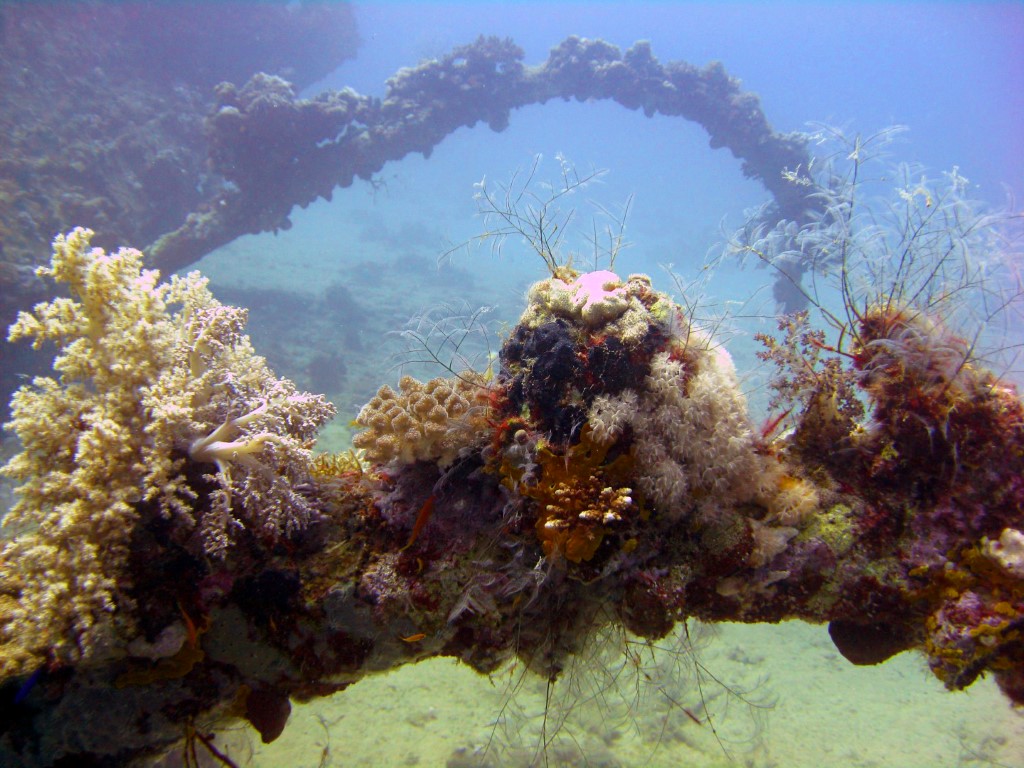
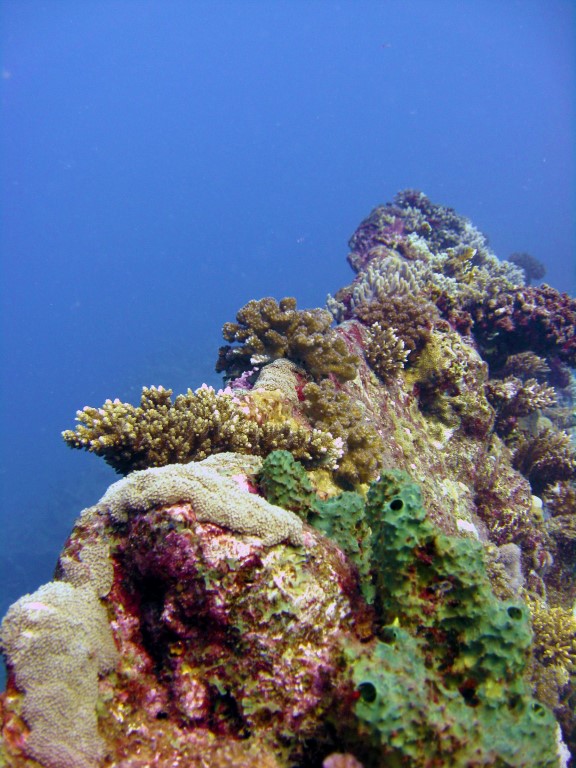
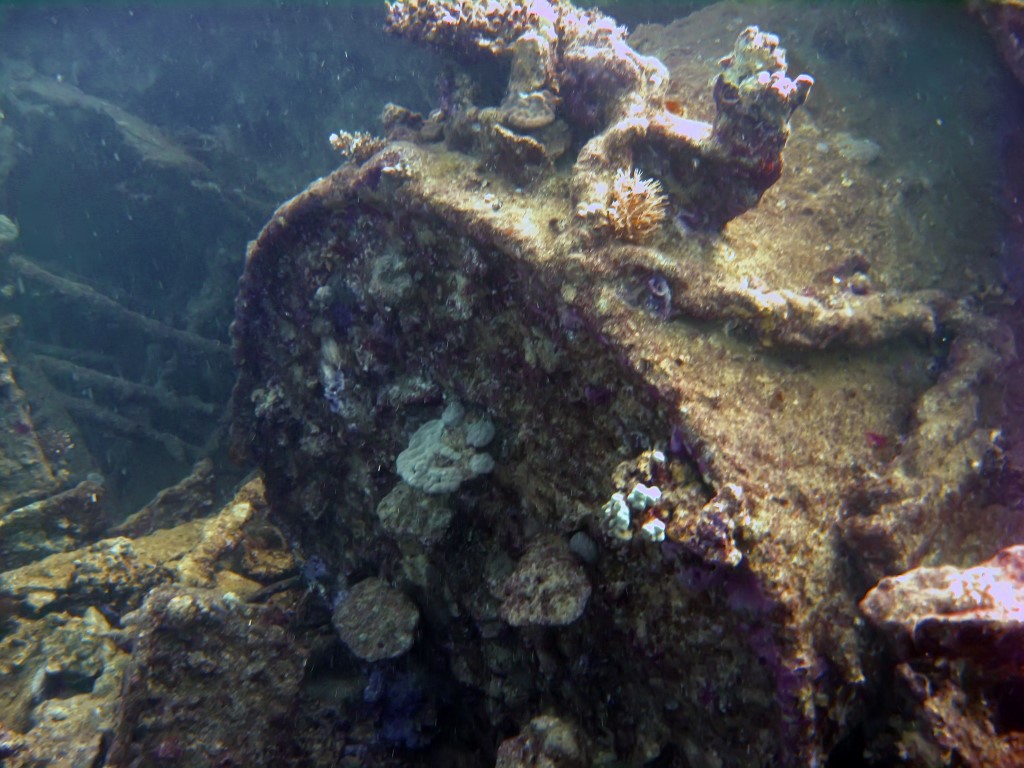
The beautiful historical ‘mirror’ of the ship reminds you of a VOC ship.
I made my first dive on this wreck in 2007 and dived on this wreck many times.
There is a lot of difference between the dives, apart from a time span of several years of course, also the condition of the wreck. For example, until 2009 the rear mirror was still completely intact, in 2010 half of it suddenly broke off and was lying on the ground.
In 2007 the ship was also full of both broken and even whole wine bottles, in 2010 you almost had to take a shovel to find a few shards. Unfortunately I suspect that many of hose wine bottle are now proudly displayed on someone’s chimney…….
The back of the ship is easily accessible, because the side after all these years consists almost exclusively of so-called ‘spareribs’, the carcass of the ship. Here you can swim in and out of the ship at any time. The front is less accessible, certainly for less experienced divers.
From the middle section, near the break in the ship, you can enter the front section. Please note that you have no other exit in this section. So you have to leave the ship through the same opening.
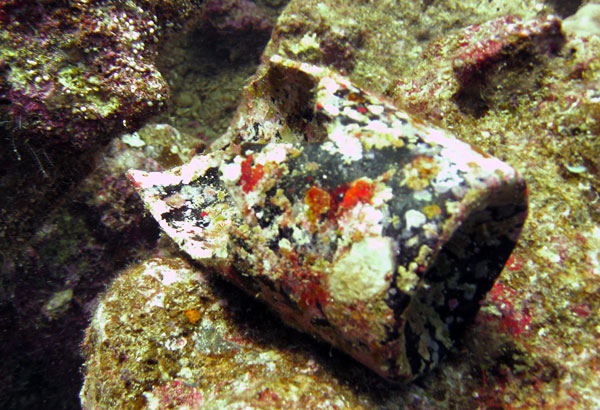
Bottles in 2009
In the tip of the bow you will find an opening through which you can look outside, this is where the bowsprit used to be.
On the outside you can still see the beautiful bow ring where the bowsprit used to be. Through the opening of the bowsprit you can also look inside and see the interior of the ship.
The aforementioned gigantic bronze propeller is definitely worth a ‘Kodak moment’!
Preferably do this at the beginning of your dive as this is the deepest part.
Conclusion
The Carnatic, a fantastic wreck with plenty to see including her propeller, masts, square gun ports and broken wine bottles on the bottom of the hold. (If you can find them that is…)
You certainly don’t have to be an experienced (wreck) diver to admire this ship.
A simple ‘tour around the ship’ is truly breathtaking. Over 150 years underwater has transformed this ship into an oasis of coral and other underwater life.
Do take your depth into account during your dive, on a this wreck you will quickly be around 25 meters.
Dive information
TIP:
It is even possible to dive the Carnatic from the adjacent wreck the ‘Giannis D.’.
From the Giannis D. it is only a 10-minute swim to the Carnatic.
To do this, follow the reef on your right shoulder from the Giannis D. (Dive at a shallow depth to save air)
You will then automatically come across the Carnatic after about 10 minutes.
Do take into account that you also have to take this route back as well, because it is not possible to be picked up by a diving boat at this location!


